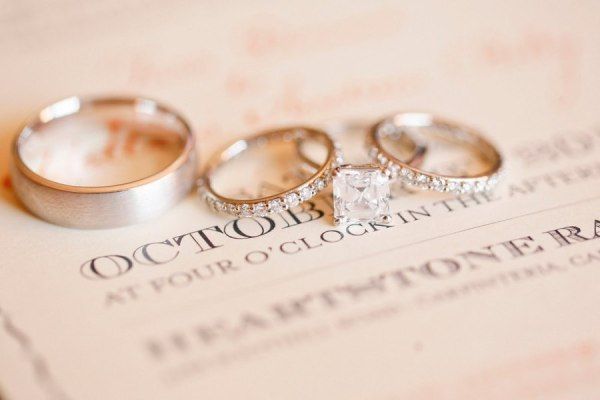 Image from Lane Dittoe Photographer via Style Me Pretty
Image from Lane Dittoe Photographer via Style Me Pretty
One of my favorite bloggers and dear friend, Sara from Burnettes Boards wrote an article exposing The $28,500 Average Wedding Cost Myth. In it, she shows that when industry leaders and experts talk about the so-called average cost of a wedding, they’re only telling part of the story.
Some of my favorite bloggers, including Lauren from Every Last Detail, Megan from Glamour and Grace came out to weigh in on the matter and, as is typical of a great blog post, the comments are just as interesting as the article. I encourage you to read though all of the comments. If you’re interested in seeing the super geeky, math girl side of me, my comment explained that there are actually 3 types of averages.
How to Understand and Deal with Wedding Cost Averages
But today I want to talk about how to deal with the possible shock anyone may feel when you come across wedding cost numbers that rival a downpayment on a house or a brand new car.
1. Ask Better Questions
If you’re a blogger, vendor, or wedding industry pundit, instead of asking if the average cost of weddings is too high, take a peek under the statistical hood for more nuanced info. Sara is a great example of this. She asked what type of average researchers were using to arrive at their number. In my own comments I revealed three types of averages statisticians use to understand averages and norms. In fact, you could ask also questions about sample size and composition:
- How many brides were interviewed?
- From what region? are their regional differences between you and the so-called national average?
- Were the brides interviewed they self selecting? Meaning do Brides Magazine readers who volunteered to be surveyed really represent all brides? [hint: no]).
You may decide to examine the shape of the bell curve from less to lux.
- Where is the “apex” or hump of the curve located? Remember, not all curves are symmetrically shaped like the commonly-thought-of bell curve.
- Are price ranges evenly distributed? Is the apex of the curve skewed to the lower side, or even the higher side?
- What did researchers look at? Vendor pricing or actual Bride spending?
- Were all regions covered. Is there a skew with cities versus rural areas?
Finding variation and nuance can give you valuable perspective and reveal truer norms for your area or for the type of vendor/bride/blogger you are.
2. Brides, be prepared to spend some money
That big fat Average Cost number should prepare you for the reality of throwing an elaborate party for one or two hundred people. This isn’t a birthday party with paper hats. You may be asking for a fancy cake, the nicest dinnerware, an elaborate beaded dress with a long lacy train, champagne for 150, a live band, professional photography for 8 hours, and favors for all of your guests. You may want letterpress, custom graphic design on your ceremony cards, menus, and escort cards. Cha-ching!
All these things add up. And no, in most cases it’s not just a matter of saying “wedding” and the price goes up. If you want to serve birthday-style, sheet cake at your wedding, the price goes down. As soon as you start adding tiers and fondant, the price goes up. Which leads me to my next point:
3. You have options
Nobody has a gun to your head making you spend thirty grand on your wedding. You’re an adult with choices. Let me say that again. You’re an adult with choices. I promise. Even if your parents are footing the bill and your mom is being a total control freak, you are an adult with choices. You can choose to be happy and relaxed. You can chose to love. And you can choose to figure out your top priorities and focus on them. I think Nikkol from Peter Loves Jane wrote it best when she commented:
From my perspective as a bride, when I got married, I had a budget that I had to stick to, so I paid top dollar for the things that were most important to me. After that, I got creative and made it work. From my perspective as a wedding vendor, I think it’s important to have a budget no matter the amount you have available to spend. Make a list of those things that you’ll die if you don’t have, and pay for them first. Then allocate the remainder of your budget to cover those things that are necessary, but that you have some opinion flexibility with.
There many be some of you (especially you destination brides) who cannot imagine working the numbers in a way that will get you under 30K. You may be right. If your priorities are 1) a stunning mountain venue 2) all you friends and family celebrating with you 3) the best details, then yes, you may pay more than 30K to have your 150 guests attend your Devil’s Thumb Ranch wedding. For others, you may be focusing on venue, entertainment and photography. Everything else–cake, flowers, and favors– you are eliminating or doing by the numbers.
Or, if you really need to save money, you can cut that guest list or elope. “Oh no!”, you say, “I could never elope!” Fine, but that is your choice. Own it. Don’t blame an entire industry for the size of your guest list and the subsequent size of your reception bill. (Not to be that bitchy blogger, but it’s true. You have choices and when you make your choices, you have to take responsibility for them.)
4. Lux or Less: It’s a Personal Choice
Whether you go Lux or Less doesn’t matter. Either option is OK, and is ultimately a highly personal choice. Look through the real mountain weddings on this blog. You will find detail-rich weddings, amazing flowers, gorgeous stationary, amazing guest transportation and OOT welcome bags, and a weekend’s worth of parties and activities. You will find brides who didn’t carry a bouquet; brides who served pie instead of an elaborate wedding cake; brides who let the mountains provide “decoration” instead of going all out and covering every square inch of their venue with “details; and brides who relied on friends to do their hair, makeup, flowers, cakes, music, and invitations.
And not all of the brides in the second group were DIY brides, nor were they “budget” brides. That split is too simple and often doesn’t reflect real people making real choices about their real weddings and finances. But a majority of the Mountain Brides featured in these webpages were down-to earth mountain brides who sorted out their priorities early and strove to stay within their budget while honoring those priorities.
They made tough decisions along the way, and ultimately chose to make their wedding day a day full of love and celebrations. In other words, they were smart, thoughtful brides. And whether you have a 10 thousand dollar budget or a 100 thousand dollar one, you’ve got to figure out your priorities and stay within your budget. The so-called average cost of a wedding factors little into the reality of your personal choices. You are you. You are not an average bride; you’re a mountain bride! Make your own sane choices and take responsibility for them. You are Awesome! :-)
What will your favorite moment be?
I’ll leave you with this final thought. In the three years I’ve been interviewing real mountain brides, and asking them to share their favorite moment, I have never heard a bride say “my favorite moment of the day was watching my guests pick up their escort cards.” Nor do they say, “my favorite wedding moment was crying and carrying on because my mom wouldn’t buy me a $8,000 Maggie Austin cake.
Most brides cherish the memory of the vows they exchanged with their new spouse, or their parents walking them down the aisle, or the moment of quiet they spend in a beautiful place with their new husband before the reception. While details may be important to you (and that is very much OK) I promise you that the most special moments on your wedding day will not be about the stuff you buy; they will be about how you love and are loved in return. Keep that in mind when you become (temporarily) heart broken over compromises you may have to make over the details.
